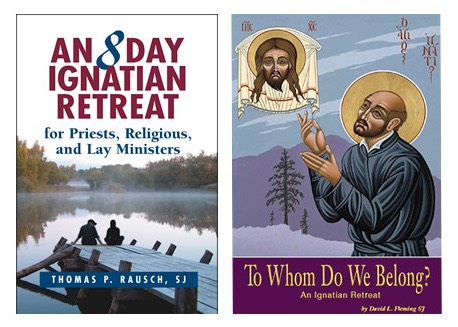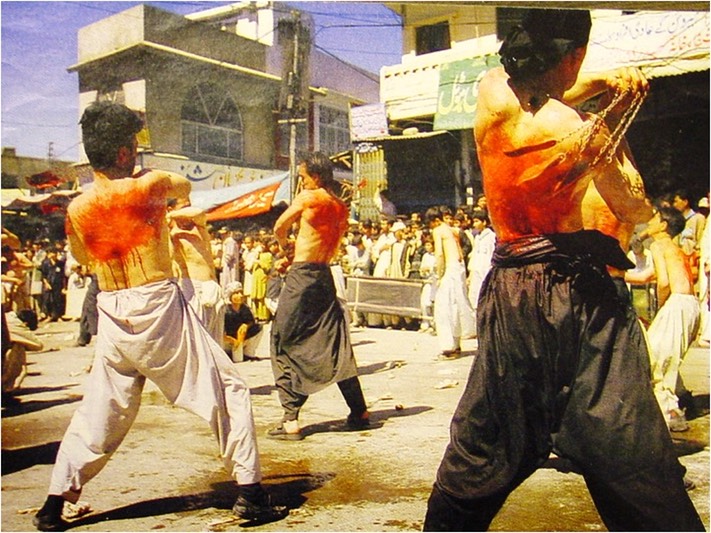St. Ignatius of Loyola is famous not only for founding the Jesuit Order, but also for his spiritual exercises. These teachings have formed the basis for many practices throughout history and in the modern spiritual formation movement. Read the spiritual exercises
Modern Use
According to Fairfield University, a Jesuit institution, the spiritual exercises can help anyone to find contemplative, communal spirituality:

Two of the many current books on Ignatian retreating: An 8 Day Ignatian Retreat, published Spiritual Exercises belong to the Church. On their own, they involve lay and Jesuit colleagues in fruitful ways. They create spiritual conversation and community, which Americans yearn for. They help religious women offer women's gifts to the Church in the world, and help the laity find their own gifts confirmed by prayer. They offer an assured way to find God working in all things and a feasible project of living contemplative in action. Just Christians in the marketplace.i
In December 1994, Jesuit Joseph Tetlow reminded us that the spiritual exercises are as popular now as ever:
It surprises no one who knows the history that Spiritual Exercises are proving an astonishingly effective instrument of lay spirituality even in the postmodern era. They are being used for and by and with lay people in many formats all around the world and then supply the basis of sophisticated spiritualities for the marketplace. It is safe to say that more people are going through the one-on-one directed Exercises today than at any time in history. It is safe to say something more: Spiritual Exercises are being used as an apostolic instrument by better-educated laity.ii
Loyola's spiritual exercises take an adherent through a month of contemplation, meditation, "prayer exercises, thought experiments, and examinations of consciousness."iiiAs with much Catholic teaching, the spiritual exercises of St. Ignatius focus on an experience-based religion and salvation through works.
Experience-Based Religion
Sensory experiences and imagination play a key role in Loyola's spiritual exercises. H. Boehmer tells us this:
Ignatius understood more than any other leader of men who preceded him that the best way to raise a man to a certain ideal is to become master of his imagination. We ‘imbue into him spiritual forces which he would find very difficult to eliminate later’, forces more lasting than all the best principles and doctrines; these forces can come up again to the surface, sometimes after years of not even mentioning them, and become so imperative that the will finds itself unable to oppose any obstacle, and has to follow their irresistible impulse.iv
One activity, called "composition," focuses on imagining a place. A person imagines the place where the thing they want to contemplate is. The object then becomes "fixed," and imagination eventually becomes reality. Today we call this exercise visualization. Ignatius defines composition here:
The First Prelude is a composition, seeing the place. Here it is to be noted that, in a visible contemplation or meditation — as, for instance, when one contemplates Christ our Lord, Who is visible — the composition will be to see with the sight of the imagination the corporeal place where the thing is found which I want to contemplate. I say the corporeal place, as for instance, a Temple or Mountain where Jesus Christ or Our Lady is found, according to what I want to contemplate. In an invisible contemplation or meditation — as here on the Sins — the composition will be to see with the sight of the imagination and consider that my soul is imprisoned in this corruptible body, and all the compound in this valley, as exiled among brute beasts: I say all the compound of soul and body.v
Salvation by Works
Loyola's exercises point to action and self-inflicted pain as ways to deal with sin and guilt. The extraordinary penance performed by Egyptian desert monks, as recounted in The Golden Legend, deeply influenced his opinions on dealing with sin, which translated into these spiritual exercises:
The tenth Addition is penance. This is divided into interior and exterior. The interior is to grieve for one’s sins, with a firm purpose of not committing them nor any others. The exterior, or fruit of the first, is chastisement for the sins committed, and is chiefly taken in three ways.
One action of penance Ignatius proposes is the giving up of food:
First Way. The first is as to eating. That is to say, when we leave off the superfluous, it is not penance, but temperance. It is penance when we leave off from the suitable; and the more and more, the greater and better — provided that the person does not injure himself, and that no notable illness follows.
Another way Loyola suggests to inflict punishment for sin is to sleep on hard, and even painful surfaces:
Second Way...the manner of sleeping. Here too it is not penance to leave off the superfluous of delicate or soft things, but it is penance when one leaves off from the suitable in the manner: and the more and more, the better...

In the Philippines, the beating and crucifixion of Christ is acted out every Easter by men who flog and crucify themselves.
The third, and most disturbing act of penance St. Ignatius gives is self-inflicted pain:
Third Way. The third, to chastise the flesh, that is, giving it sensible pain, which is given by wearing haircloth or cords or iron chains next to the flesh, by scourging or wounding oneself, and by other kinds of austerity. Note. What appears most suitable and most secure with regard to penance is that the pain should be sensible in the flesh and not enter within the bones, so that it give pain and not illness. For this it appears to be more suitable to scourge oneself with thin cords, which give pain exteriorly, rather than in another way which would cause notable illness within.
We know from Scripture that finding forgiveness from sin is only possible through the punishment Christ took on our behalf, and that conquering sin in our lives is only possible through the work of the Holy Spirit, given by God. However, Loyola says that the penalty for sins, and the ability to control the sinful nature, is found inself-inflicted pain:
...the exterior penances are done chiefly for three ends: First, as satisfaction for the sins committed; Second, to conquer oneself — that is, to make sensuality obey reason and all inferior parts be more subject to the superior; Third, to seek and find some grace or gift which the person wants and desires...the person finds himself.vi
Loyola is plain wrong. Jesus was the satisfaction for our sins (Acts 4:12). No further penalty is needed if we come to Him, repent, and accept His forgiveness (Ephesians 2:8-9). Catholicism denies the peace that Christ offers us, and instead says that we must continually pay for our sins through penance.
Catholicism Defined
Loyola's spiritual exercises also incorporates several unBiblical Catholic doctrines, such as indulgences, the praise of relics and saints, the celebration of pagan holidays, and the belief that the Catholic Church is the mother of all churches:
Fifth Rule. The fifth: To praise vows of Religion, of obedience, of poverty, of chastity and of other perfections of supererogation...
Sixth Rule. To praise relics of the Saints, giving veneration to them and praying to the Saints; and to praise Stations, pilgrimages, Indulgences, pardons, Cruzadas, and candles lighted in the churches.
Seventh Rule. To praise Constitutions about fasts and abstinence, as of Lent, Ember Days, Vigils, Friday and Saturday; likewise penances, not only interior, but also exterior.
Eighth Rule. To praise the ornaments and the buildings of churches; likewise images, and to venerate them according to what they represent...
Let the following Rules be observed...First Rule. The first: All judgment laid aside, we ought to have our mind ready and prompt to obey, in all, the true Spouse of Christ our Lord, which is our holy Mother the Church Hierarchical.vii
Blind Obedience to the Papacy
Loyola wrote, "Even if God gave you an animal without sense for master, you will not hesitate to obey him, as master and guide, because God ordained it to be so."viiiThe constitutions of the Jesuits also repeat that one must see Christ in the person of the Jesuit Superior General. This blind obedience policy was also included in the spiritual exercises:
Thirteenth Rule. To be right in everything, we ought always to hold that the white which I see, is black, if the Hierarchical Church so decides it, believing that between Christ our Lord, the Bridegroom, and the Church, His Bride, there is the same Spirit which governs and directs us for the salvation of our souls. Because by the same Spirit and our Lord Who gave the ten Commandments, our holy Mother the Church is directed and governed.ix
In all of the situations provided by Loyola and his spiritual exercises, moral judgment becomes suspended. Truth becomes subject to the experience or supervisor rather than the absolute standard of God’s Word.
Ahead to Protestantism Destroyed
This article is adapted from Walter Veith's Rekindling the Reformation DVD The Jesuits and the Counter Reformation Part 1.
Ahead to Protestantism Destroyed
i. "The Spiritual Exercises of Ignatius Loyola," Fairfield University website.
ii. Joseph Tetlow, National Jesuit News (December 1994), as quoted in "The Spiritual Exercises of Ignatius Loyola," Fairfield University website.
iii. "Spiritual Exercises," Society of Jesus, Oregon Province website.
iv. H. Boehmer, Professor at the University of Bonn, Les Jesuites (Paris: Armand Colin,1910): 25, 34-35, as quoted in Emond Paris, The Secret History of the Jesuits (Chino, CA: Chick Publications, 1975).
v. "Spiritual Exercises of St. Ignatius 45-54," Society of Jesus, Oregon Province website.
vi. Elder Mullan S. J. (Trans.) The Spiritual Exercises of St. Ignatius of Loyola (New York: P. Kennedy & Sons).
vii. Ibid.
viii. Edmond Paris, The Secret History of the Jesuits (Chino, CA: Chick Publications, 1975): 26.
ix. Elder Mullan S. J. (Trans.) The Spiritual Exercises of St. Ignatius of Loyola (New York: P. Kennedy & Sons)